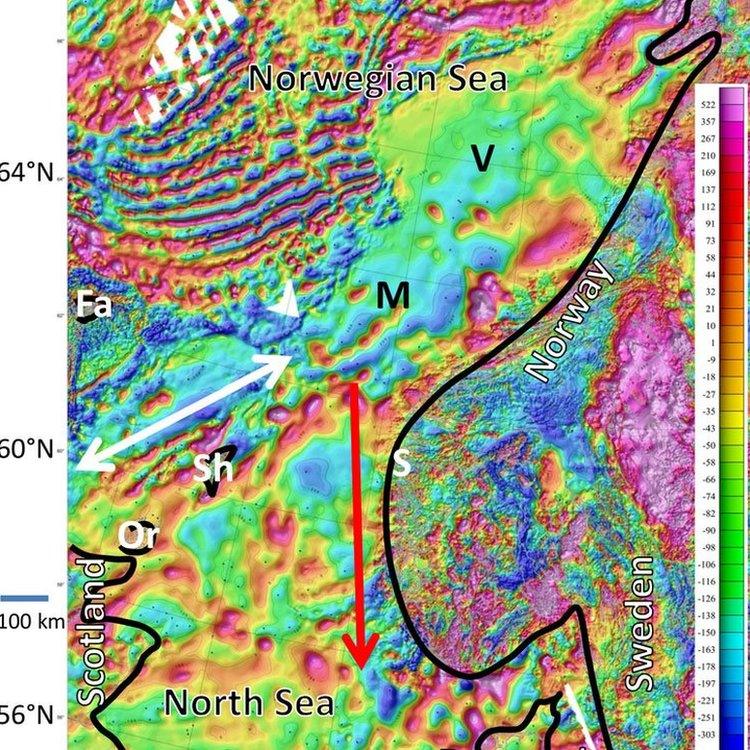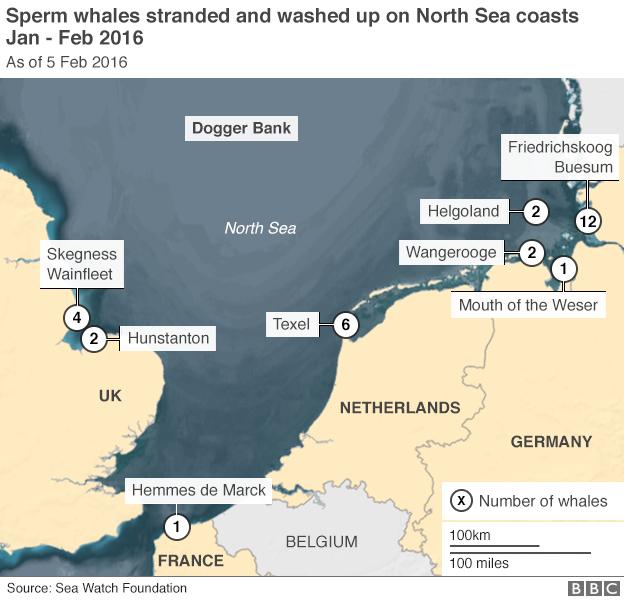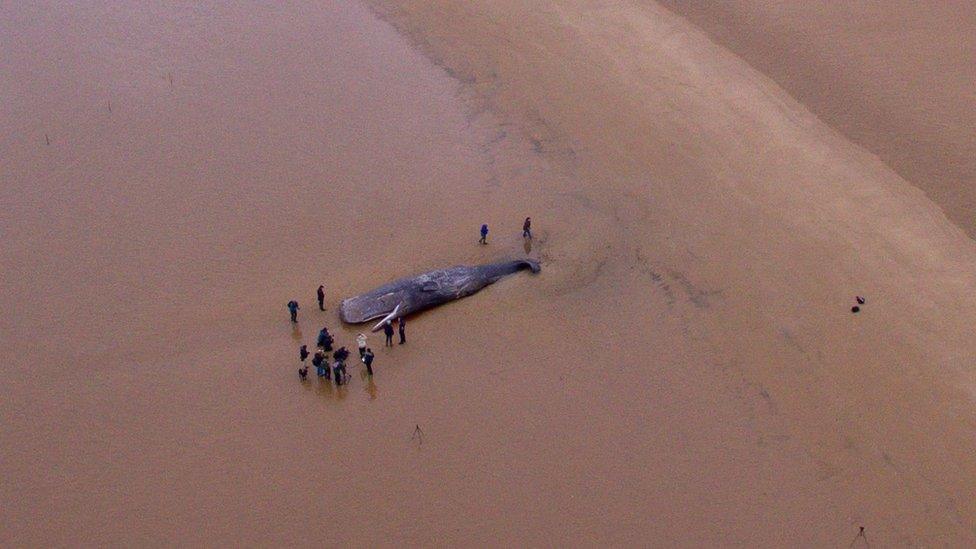Northern lights linked to North Sea whale strandings
- Published
- comments

This sperm whale was one of a number stranded on this beach in the Netherlands
Large solar storms, responsible for the northern lights, may have played a role in the strandings of 29 sperm whales in the North Sea early in 2016.
A new study says these geomagnetic disruptions may have confused the whales' ability to navigate, diverting them into the shallow waters.
Trapped and lost, the whales died on European beaches, attempting to escape.
The research has been published, external recently in the International Journal of Astrobiology.
Mysterious losses
Researchers have been puzzled by the losses as autopsies showed that the animals were mainly well fed, young and disease-free.
The 29 strandings generated a great deal of public interest and a large number of theories among scientists.
These ranged from poisoning, to climatic changes driving prey into the North Sea which the large cetaceans followed to their doom.
Sperm whales live in deep, warm-to-temperate waters all around the world. Many groups live around the Azores in the eastern Atlantic.
When they are between 10 and 15 years old, young males head north towards the polar region, attracted by the huge quantities of squid found in the colder waters.

Two sperm whales that washed up on a beach near Gibraltar Point in Skegness in January 2016
Their journey sometimes takes them up along the west coasts of the UK and Ireland and into the Norwegian sea. They normally return by the same route.
But in less than a month in early 2016, 29 sperm whales were found stranded on the coasts of Germany, the Netherlands, the UK and France.
Now a team of researchers say they think they understand what happened to them.
The argue that sperm whales navigate using the Earth's geomagnetic field.
Rather than being uniform, the field is stronger in some places and weaker in others, and scientists believe that species learn to read these anomalies and use them for navigation in the way that humans read contours on maps.
Dr Klaus Vanselow from the University of Kiel, Germany, and his colleagues say that large-scale solar storms may have distorted the magnetic field and caused the whales to lose their way.
Triggered by coronal mass ejections from the Sun, these storms contain large amounts of charged particles and radiation.
When they hit the Earth's upper atmosphere, they produce the spectacular displays of the polar lights over the Arctic, however the most powerful storms can also damage communications systems and satellites.
Scientists already have some evidence that solar storm activity can impact the navigating abilities of birds and bees.

This map shows the 'magnetic mountain' anomaly off the coast of Norway. The whales should have followed the white arrow but the authors argue that the solar storms made the mountains invisible and the whales instead followed the red arrow to the North Sea
Dr Vanselow and his colleagues studied the connection between whale strandings and two major solar storms that took place at the very end of December in 2015.
These produced huge displays of the Aurora Borealis that were seen in many parts of Scotland and elsewhere.
Looking specifically at the region around Shetland, the scientists found that these solar events would have caused short-term shifts in the magnetic field of up to 460km, in the area between the islands and Norway.
This could have caused sperm whales in the region to move in the wrong direction.
They also believe that sperm whales see a regular magnetic anomaly off the Norwegian coast as a "geomagnetic mountain chain", a kind of guardrail that prevents them from entering the North Sea.
The solar storms may have nullified this effect, rendering the mountain chain invisible and allowing the whales to swim through into the North Sea.

"Where the polar lights are seen, that's the region with the most geomagnetic disruptions on the Earth's surface," Dr Vanselow told BBC News.
"Sperm whales are very huge animals and swim in the free ocean so if they are disrupted by this affect, they can swim in the wrong direction for days and then correct it.
"But in the area between Scotland and Norway, if the whales swim in the wrong direction for one or two days, then it is too late for them to go back, they are trapped."
Dr Vanselow believes that his theory makes sense with the timeline of the discovery of the stranded whales up to six weeks after the storms.
He believes that because young males grow up around the Azores, an area that sees minimal impacts from solar storms, the creatures have little experience of the abrupt and powerful events that affect the poles.
Dr Vanselow's research is a theory that is very difficult, if not impossible, to prove.
However, other scientists say it is plausible.

This whale was beached at Hunstanton and was one of the last to die in the stranding event in early 2016
"It would be difficult to say that 'yes this was the cause', we would be cautious in saying that," said Abbo Van Neer from the University of Hannover who carried out the autopsies on the 16 whales that stranded in Germany.
"But it is a valid hypothesis and a potential reason for the stranding."
Nasa has also been investigating the question, external of whether solar storms can affect a whole range of cetaceans around the world.
A team of researchers is shortly to publish a research paper on the connection between strandings in Cape Cod and geomagnetic storms. They say the Venselow paper is "well founded".
"It is one potential mechanism for having animals confused, I think it's a credible theory," Dr Antti Pulkkinen, who is leading the Nasa project, told BBC News.
"But does their paper prove that is the case? I don't think so."
"Having looked at this problem from a data analysis point of view, it is not a single factor that contributes to this.
"Things need to line up from multiple different perspectives for these events to take place."
Follow Matt on Twitter, external and on Facebook, external.